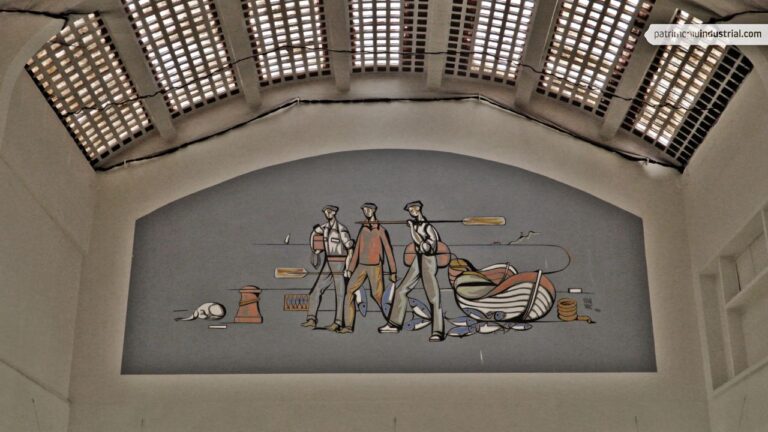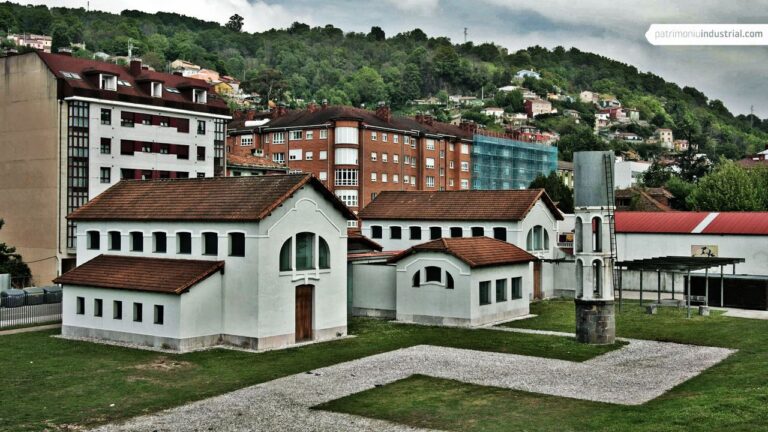
by José María Rodríguez-Vigil Reguera
B.A. and Ph.D. degrees in Geography and History (University of Oviedo). He has participated in two national research projects and published several articles in academic journals and books.
As industry grew during the contemporary period, urban facilities were built in many Asturian cities and towns with private as well as public funding.
The industrialization process that began around the middle of the nineteenth century produced drastic economic, demographic and social changes, transforming the shape, function and appearance of many Asturian cities and towns. The dual nature of the new industrial city revealed at once the growing prosperity of the capitalist bourgeois minority and the absolute vulnerability of a proletarian majority. Many public, private and mixed-funding initiatives responded to different needs as far as education, leisure and consumer products, producing a number of buildings and facilities with a markedly modern character. Built according to rationalist and hygienist guidelines, market halls became the proper setting for the retail of fresh food. In spite of the diverse materials used – iron, brick, concrete – and styles – from nineteenth-century eclecticism to the functionalism of the inter-war period – these buildings usually feature a roofed rectangular floor with no walls, as for instance the market halls of Villaviciosa, Mieres and Ribadesella. Several slaughterhouses were built in the same style, designed to guarantee the adequate slaughtering of animals and the processing of their meat – the Langreo slaughterhouse is a good example.
The company owners’ paternalistic intentions and concern for popular education produced educational foundations such as the La Salle School (La Felguera), built by the Duro-Felguera company in 1902 as a school for workers’ children. It was expanded with a Trade and Art School in 1917. Finally, it is worth mentioning how the urban landscape of the period improved by means of charming public parks. City halls promoted their creation for the enjoyment of the working classes (Dorado Park in Sama, Dolores Fernández Duro Park in La Felguera), with the occasional help of the local industrial bourgeoisie’s interested generosity.
FERNÁNDEZ MOLINA, J.R.; GONZÁLEZ MORIYÓN, J., La arquitectura del hierro en Asturias. 13 mercados y otros edificios urbanos, Colegio Oficial de Arquitectos de Asturias, 1994.
GARCÍA CUETOS, M., “Patrimonio oculto en un paisaje en transformación: la obra desconocida del ingeniero José Eugenio Ribera en Asturias”, I Congreso Internacional de Patrimonio Industrial y de la Obra Pública: Nuevas estrategias en la gestión del Patrimonio Industrial, 2016, p.516-528.
RODRÍGUEZ-VIGIL REGUERA, J.M., “Notas sobre la modernización del consumo en Asturias: almacenes textiles y bazares en Gijón y Oviedo (1874-1936)”, en Liño. Revista Anual de Historia del Arte, 2015.
TERRÓN BAÑUELOS, A., La enseñanza primaria en la zona industrial de Asturias (1898-1923), Servicio de Publicaciones del Principado de Asturias, 1990.
ZAPICO LÓPEZ, M., “Historia constructiva y rehabilitación del antiguo Matadero Municipal de Langreo (Asturias)”, en Studium. Revista de Humanidades, 2015.






Recent Comments